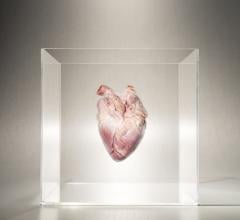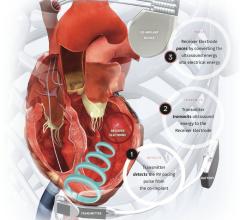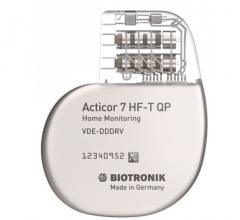
March 3, 2021 — Medtronic announced new results from the landmark REVERSE trial, evaluating outcomes of cardiac resynchronization therapy (CRT) for patients with mild heart failure (HF). This new analysis of the REVERSE (REsynchronization reVErses Remodeling in Systolic left vEntricular dysfunction) clinical trial shows that patients whose heart failure stabilizes with CRT live longer, similar to patients whose condition improves with CRT. The manuscript was recently published in the Journal of American College of Cardiology: Clinical Electrophysiology.[1]
Heart failure impacts more than 6.5 million people in the U.S. As a progressive disease, it worsens over time, leading to a reduced quality of life, greater risk of complications and death. CRT is an established treatment for select patients with heart failure and has been demonstrated to improve survival and quality of life and reduce heart failure-related hospitalizations.
"It is commonly stated within the cardiology community that about a third of patients do not respond to CRT," said Michael R. Gold, M.D., Ph.D., Michael E. Assey Professor of Medicine at the Medical University of South Carolina, Charleston. "However, REVERSE shows that with mild heart failure, patient stability is a long-term benefit of CRT, similar to patient improvement. Our current classifications do not give us the full picture of how patients benefit from CRT. We need to redefine our current understanding of CRT response to include stability as a favorable outcome for this patient population."
The progression of heart failure can be measured in a number of ways. Clinical Composite Score (CCS) is used to categorize patient outcomes as improved, unchanged (stabilized), or worsened, which is determined using clinical measures, heart failure status and patient symptoms. Similarly, left ventricular end systolic volume index (LVESVi) assesses the amount of blood remaining in the left ventricle after contracting to determine the heart's effectiveness at pumping blood to meet the body's needs. Since survival decreases as LVESVi rises, this measure has been shown to be an important predictor of long-term outcomes in patients.
Using the CCS (406 patients), more than half (56%) of patients with mild heart failure improved at one year, 30% remained unchanged (or stabilized), and 14% worsened; five-year mortality for improved or stabilized patients was 10% compared to 21% for worsened patients, p=0.01. Using the LVESVi measure (353 patients), there was a 73% decrease in the risk of dying at five years for CRT patients who stabilized or improved, compared to those whose condition worsened (i.e., five-year mortality for improved or stabilized patients was 8% compared to 30% for worsened patients, p<0.01). Results of the trial showed a greater percentage of patients with mild heart failure benefited from CRT therapy, compared to current classifications.
"As we look for innovative solutions to reduce the burden of heart failure, the REVERSE analysis underscores that our CRT devices provide benefits for a larger number of patients than we previously understood," said Rob Kowal, M.D., Ph.D., chief medical officer of cardiac rhythm management, which is reported as part of the cardiac and vascular group at Medtronic. "REVERSE reinforces the strong clinical evidence supporting CRT, and the value of CRT as an option to slow the progression of this debilitating disease. Time and again, the landmark CRT trials have demonstrated a range of patient stabilization or improvement with the application of cardiac resynchronization therapy."
Optimized Implementation of Cardiac Resynchronization Therapy: A Call for Action for Referral and Optimization of Care, a recent position statement issued by the European Society of Cardiology (ESC) and its partners, similarly concluded that "a slowing of a progressive disease [such as heart failure] is a positive outcome," and "therefore 'stability' is seen as a positive outcome."[2]
The REVERSE trial was the first, large scale, global, randomized, double-blind study to evaluate the benefits of CRT for patients with mild HF – those designated as New York Heart Association Class I/II. The trial included 73 sites worldwide, including those in the U.S. Western Europe, and Canada.
The Medtronic portfolio of therapies, diagnostic tools and services for patients suffering from heart failure includes CRT devices, including MR-conditional CRT-defibrillators and CRT-pacemakers; mechanical circulatory support therapy for advanced heart failure patients; heart failure diagnostics; and meaningful expert analysis through Medtronic Care Management Services.
For more information: www.medtronic.com
References:


 July 21, 2025
July 21, 2025 









